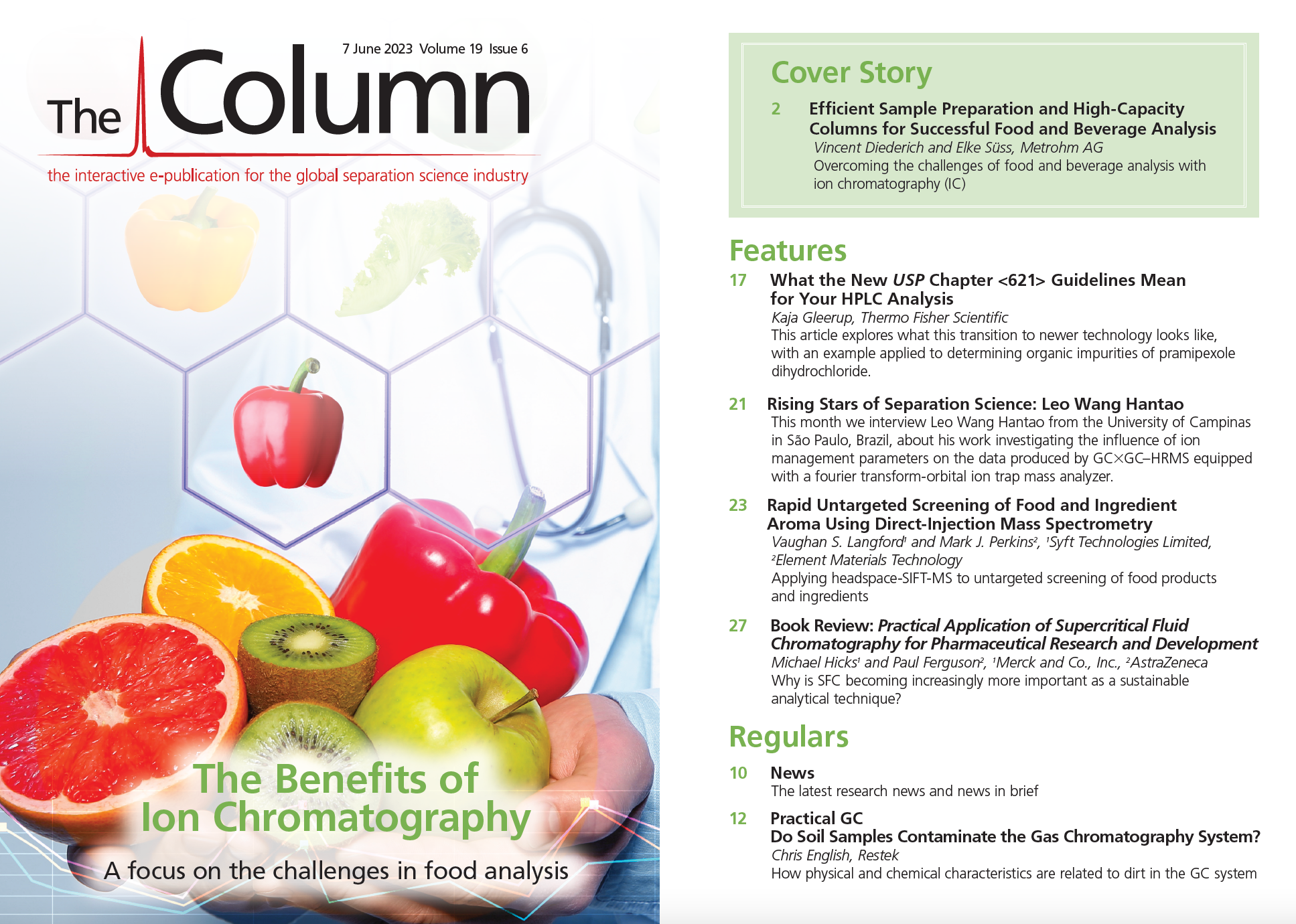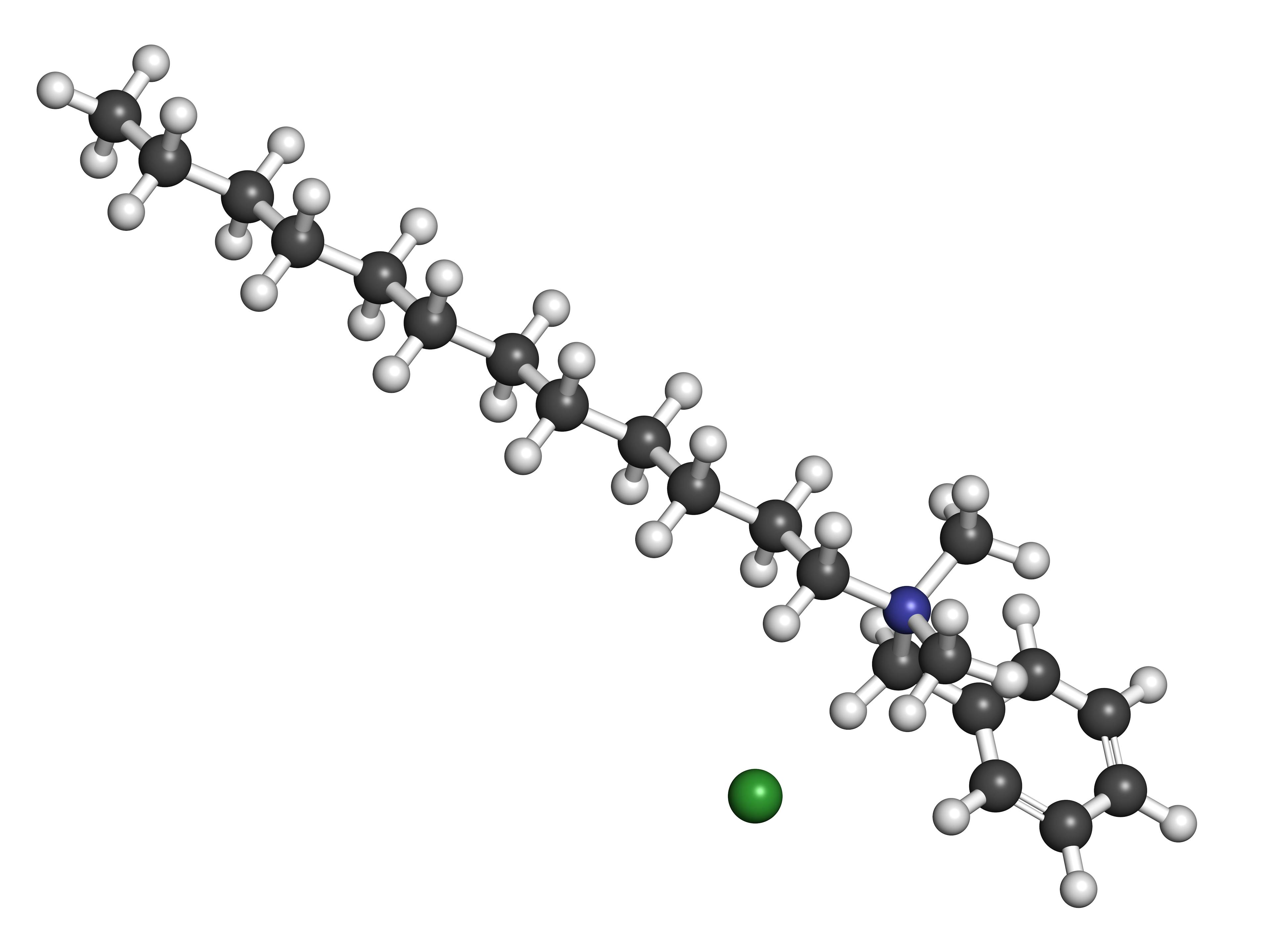Determining Benzalkonium Chloride in Pharmaceutical Formulations
The latest research news and news in brief.
Researchers at Universidade da Coruña in Zapateira, Spain have developed a new method for determining benzalkonium chloride (BAK) in pharmaceutical formulations using mixed-mode chromatography (1). The team observed a U-shaped retention behaviour based on mixed-mode reversed-phase–hydrophilic interaction liquid chromatography (HILIC) for BAK using a core–shell column functionalized with biphenyl groups.
Benzalkonium chloride biocide, molecular model | Image Credit: © molekuul.be - stock.adobe.com

In the study, the bimodal retention was observed for the four BAK homologues, and the data were adjusted to polynomial equations, which allowed for modelling and predicting the U-shaped retention. The method was validated by analyzing cutaneous, otic, and ophthalmic formulations with different active pharmaceutical ingredients and excipients. The proposed method has several advantages, including low sample volume and short analysis time, and good analytical performance was obtained.
Published in Talanta, the research reports that the U-shaped retention was dependent on the chemical structure of the analyte with mixed functionality and on the high selectivity of the chromatographic column. The salt concentration, anion and cation of the salt, and pH in the mobile phase were studied to understand their influence on the two retention modes. Linear relationships between the retention factors of the four homologues were found in a wide range of %acetonitrile when the salt and triethylamine concentration, pH, and nature of salt were changed. The differences found in the retention of the homologues, when increasing the alkyl chain length, were more significant in the reversed-phase mode because of predominant hydrophobic interactions.
Overall, the study highlights the importance of developing new chromatographic methods for the analysis of ionizable compounds such as BAK, and the potential of mixed-mode chromatography for pharmaceutical applications. The authors suggest that the proposed method could be further optimized and applied to other types of pharmaceutical formulations.
Reference
(1) Prieto-Blanco, M. C.; Planas-Franco, A.; Muniategui-Lorenzo, S.; González-Castro, M. J. Mixed-Mode Chromatography of Mixed Functionalized Analytes as the Homologues of Benzalkonium Chloride. Application to Pharmaceutical Formulations. Talanta 2023, 255, 124228. DOI: 10.1016/j.talanta.2022.124228

Reversed-Phases for LC Deliberately Doped with Positive Charge: Tips and Tricks for Effective Use
May 13th 2025In this month's edition of LC Troubleshooting, Dwight Stoll and his fellow researchers discuss both the benefits (improved peak shape/loading) and challenges (excessive interaction) associated with charge-doped reversed-phase (RP) columns for both analytical and preparative separations.
Investigating 3D-Printable Stationary Phases in Liquid Chromatography
May 7th 20253D printing technology has potential in chromatography, but a major challenge is developing materials with both high porosity and robust mechanical properties. Recently, scientists compared the separation performances of eight different 3D printable stationary phases.
Characterizing Polyamides Using Reversed-Phase Liquid Chromatography
May 5th 2025Polyamides can be difficult to characterize, despite their use in various aspects of everyday life. Vrije Universiteit Amsterdam researchers hoped to address this using a reversed-phase liquid chromatography (RPLC)-based approach.

.png&w=3840&q=75)

.png&w=3840&q=75)



.png&w=3840&q=75)



.png&w=3840&q=75)














